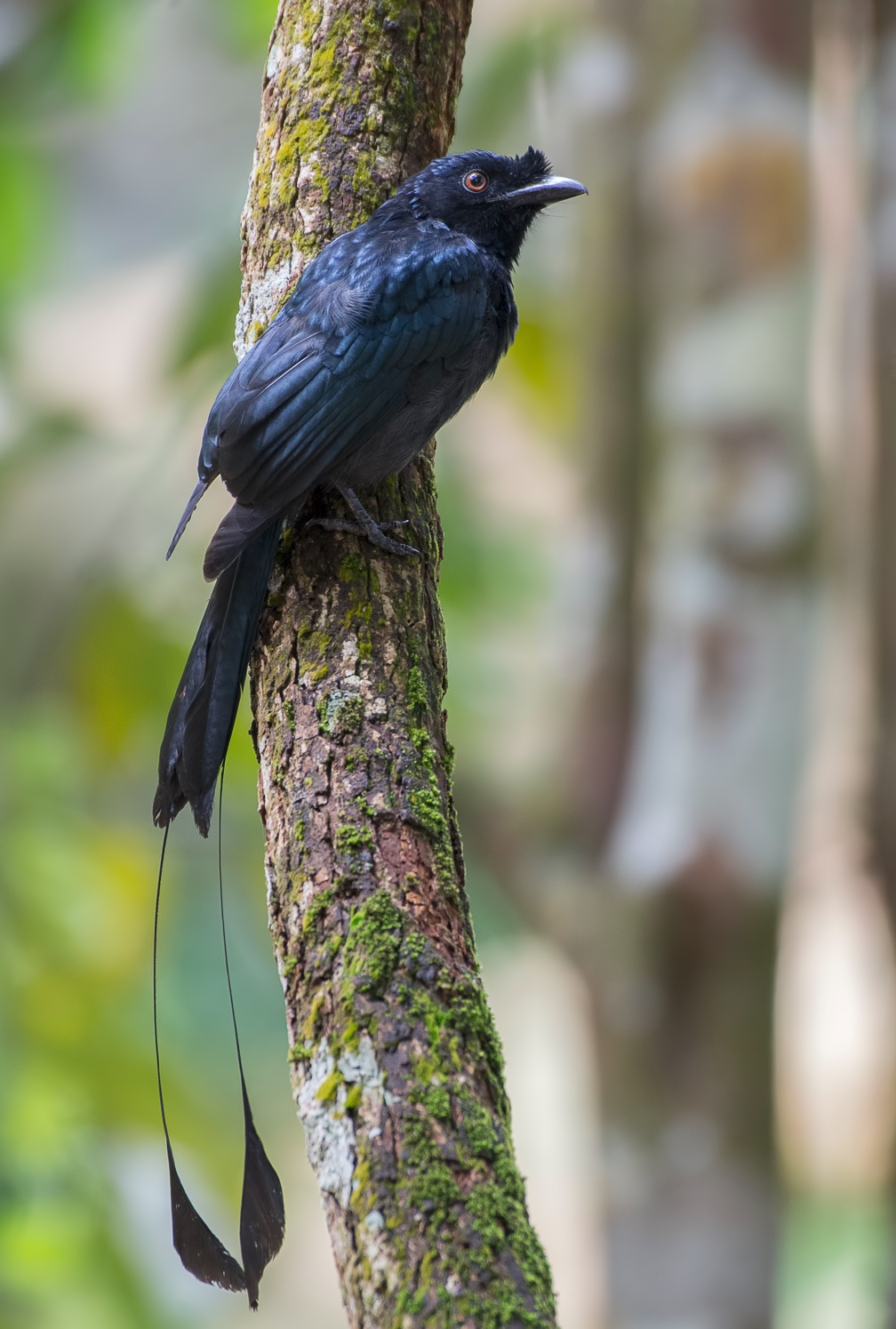- Recovering forests in Malaysia that were once selectively logged are an important habitat for tropical forest birds, a new study has found.
- The study surveyed bird biodiversity in Kenaboi State Park, which was last logged in the 1980s and declared as a protected area in 2008.
- Unlike the state park, other selectively logged forests across Malaysia are commonly turned into oil palm plantations and agricultural land rather than being allowed to recover, the researchers said.
- They recommend foresters make use of post-harvest management techniques to speed up recovery for selectively logged forests, and for state governments to declare these forests as protected areas.
On a cold and humid morning in March, two bird surveyors stood in the dim forests of Kenaboi State Park in Malaysia, straining their ears for birdsong. From where they stood, they saw towering rainforest trees and thick undergrowth beside abandoned logging trails.
The park, which had been selectively logged almost four decades ago, had had most of its matured trees taken out. Biodiversity had suffered then. But when the surveyors spotted the warm flash of the orange-bellied flowerpecker (Dicaeum trigonostigma), and heard the nasal songs of the little spiderhunter (Arachnothera longirostra), and otherwise recorded more than 1,000 individual birds in their two-month study, they knew the forest was recovering.


Such disturbed rainforests are common across Malaysia, where under state law, stretches of once-pristine forest can be marked for timber production, selectively logged, and allowed to recover again. But this approach, though more sustainable than clear-cutting in theory, has seen problems in practice.
Once selective logging takes place, production forests are classified as degraded rather than virgin forests, which also makes it more legally permissible for companies to clear and convert their land for other uses. Recovering forests have been cut down to make way for oil palm plantations, agricultural land and commercial tree plantations.
Kenaboi State Park, once a production forest but now under protection, is an anomaly, but also a glimpse of the biodiversity Malaysia’s disturbed forests can hold if allowed to recover properly. The researchers, whose study was published in Global Ecology and Conservation, counted 1,068 birds from 111 species during 60 sampling sessions within the park.
Sharifah Nur Atikah and Muhammad Syafiq Yahya, both Ph.D. students at Universiti Putra Malaysia, visited 30 sampling points once in March, then once again in April 2018, for 10 minutes each time. They heard and saw common birds including different types of flowerpeckers, cuckoos and ground babblers.
There were rarer species too: the luminously feathered and near-threatened green broadbill (Calyptomena viridis), the vulnerable rhinoceros hornbill (Buceros rhinoceros), and more. “Even after logging, disturbed tropical rainforest still serve as important habitats for a large proportion of forest birds including those species with high conservation values,” they wrote in their paper.


The study also found forest and biodiversity recovery processes could be further speeded up with the right post-harvest techniques, such as leaving more dead trees in the forest.
“Normally, we don’t do direct intervention management on the vegetation structure after logging,” said Badrul Azhar, corresponding author of the study, tropical ecologist and senior lecturer at Universiti Putra Malaysia. “People just leave the place, leave it to mother nature to start the recovery process.”
But the researchers, who also investigated the effect of different site-level attributes (such as percentage of canopy cover and number of shrubs) on bird biodiversity in their study, found the number of fallen and standing dead trees to be particularly influential.
“Our data suggest the importance of dead trees,” first author Atikah said in an email. “Some bird groups were found to be associated with the availability of dead trees as they could provide suitable nesting sites … these dead trees should be retained as they could serve as an important habitat component for forest biodiversity.”

Kenaboi State Park, last logged in the 1980s and declared a state wildlife park in 2008, has not seen its bird biodiversity return to levels recorded in primary forests. “It’s been almost 40 years, but avian biodiversity [may] still be 25% poorer compared with primary forests,” Azhar said.
“The clear-cutting system is much worse than selective logging, but this shows we need to refine our selective logging system and find ways to minimize the impact on biodiversity,” he added.
Malaysia has lost 29% of its tree cover since 2000, data from Global Forest Watch show. Some 18% of its total forested area is protected today, with licensed logging allowed in the remaining 82%. As the climate crisis intensifies, preserving Malaysia’s diminishing forests, which act as carbon sinks, is seen as key to meeting the country’s global environmental commitments.
When allowed to recover, selectively logged forests like Kenaboi State Park can not only regain their biodiversity, but also contribute ecotourism revenue to the state, Azhar said.
“It’s high time to shift our focus from logging revenues to other sources of income,” he said. “Rather than turning production forests into plantations, it’s better to upgrade them to protected areas or national parks.”
Banner image of Rhinoceros Hornbill (Buceros rhinoceros). Image courtesy of Muhammad Syafiq Yahya.
Citation:
Atikah, S. N., Yahya, M. S., Norhisham, A. R., Kamarudin, N., Sanusi, R. & Azhar, B. (2021) Effects of vegetation structure on avian biodiversity in a selectively logged hill dipterocarp forest. Global Ecology and Conservation, 28. doi:10.1016/j.gecco.2021.e01660
FEEDBACK: Use this form to send a message to the author of this post. If you want to post a public comment, you can do that at the bottom of the page.
